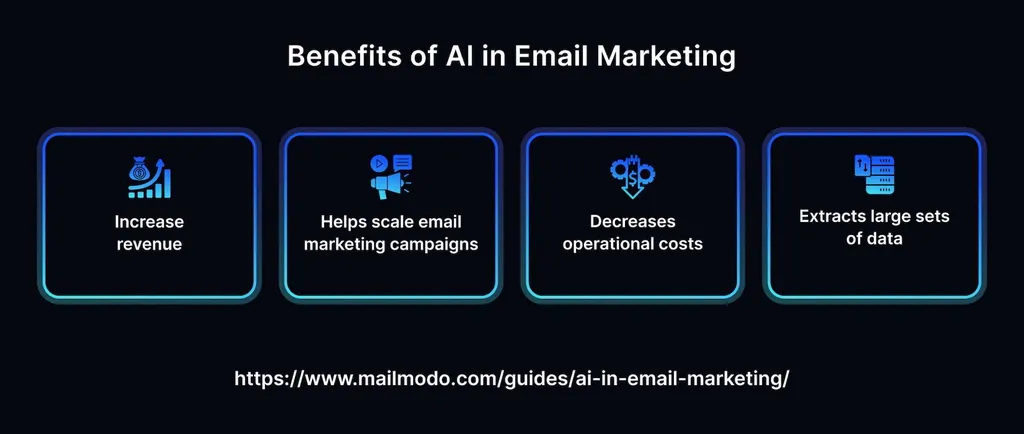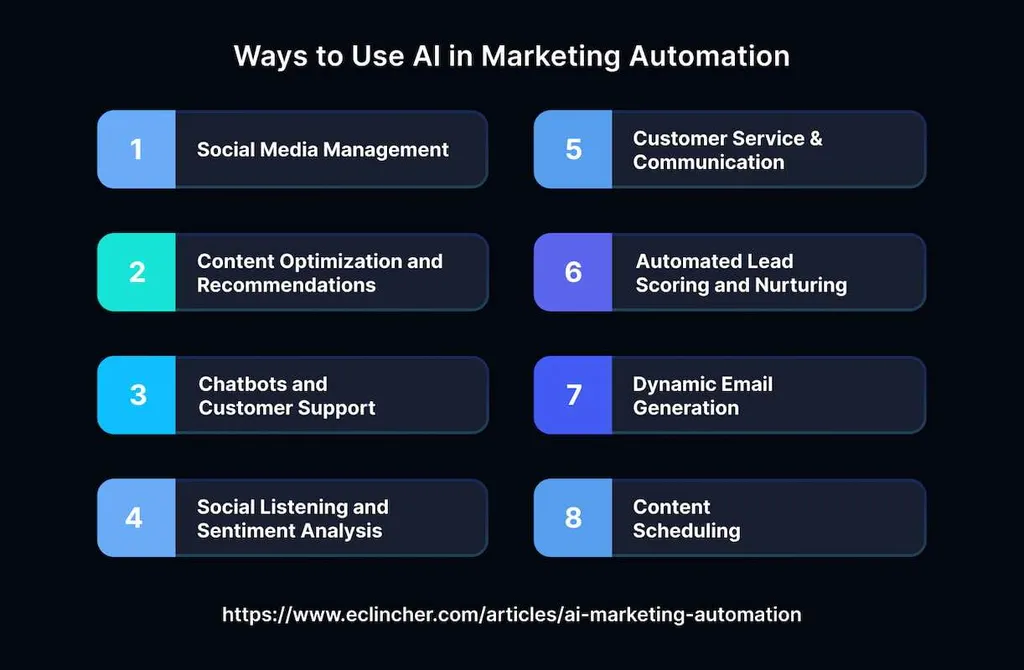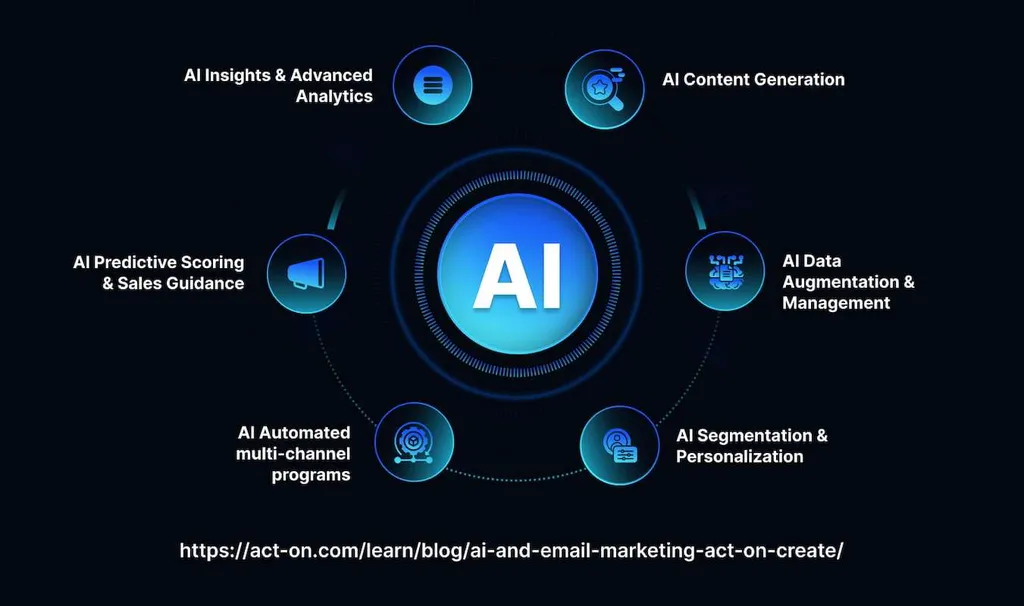The development of Artificial Intelligence (AI) technology has optimized marketing routines. Businesses deploy automated solutions to schedule newsletters, write engaging replies, and make their campaigns more targeted. The usage of AI tools allows companies to streamline inbox management and simplify their workflows. While traditional solutions empower entities to expedite routines, they lack the capacity to function in an automated mode. In this guide, we will thoroughly examine how enterprises can leverage AI email automation to augment their outreach efforts.
What is AI Email Automation?
The concept describes algorithm-based solutions that facilitate inbox management. Companies deploy such systems to make online campaigns more result-yielding. The usage of AI tools streamlines the process of reaching out to potential customers and achieving higher response rates. If an entity needs to expand its outreach, it deploys advanced tools, allowing it to make its messages more targeted, organize replies, and provide timely replies to user queries.
AI-powered features categorize and sort emails according to specific criteria. The usage of machine learning (ML) technology allows algorithm-driven systems to learn and provide high-accuracy responses. AI tools identify the language of incoming messages, interpret queries in the context, and analyze customer data to offer tailored recommendations. They are trained to unveil the intent and discover convoluted patterns.
When integrating AI solutions with existing software, companies need to train them to categorize requests. Implementing such tools enables CS managers to reply to client queries across multiple communication channels.
How Does AI Improve Email Automation?

The significance of generative AI for email marketing is hard to underestimate. Algorithms make it easier to manage outreach efforts, as their utilization has multiple advantages:
- Tailored responses: Companies deploy AI to scale up operations and provide replies relevant to clients’ needs. AI-driven marketing tools write and send personalized replies after analyzing the history of past interactions with a recipient.
- Lower churn rate: AI models can be trained to recognize signs of dissatisfaction and predict the probability of a client deciding against purchasing a product. Using them, professionals adjust campaigns and send emails addressing potential issues.
- Algorithm-based campaign tools: Firms deploy AI to automate routine processes, including A/B testing, scheduling, and writing follow-up messages.
- Data analysis: Based on Large Language Models (LLMs), AI systems process a lot of data and extract valuable insights helping enterprises adjust strategies. It allows marketing professionals to make fact-based decisions and improve the efficiency of marketing strategies.
- Customer retention: AI bots make it easier to run client loyalty campaigns. They categorize consumers according to certain criteria and incentivize specific groups.
- Predictive analytics: AI tools examine the potential impact of client behavior on the effectiveness of marketing campaigns. They predict the most likely outcomes of deploying specific strategies and suggest how firms can make their efforts more efficient.
Furthermore, AI empowers entities to monitor progress and adjust campaigns to maximize the output.
How to Deploy AI Tools in Email Marketing

Professionals from various industries embrace AI products to automate processes, analyze datasets, and make weighted decisions. The integration of such tools facilitates creating personalized offers and generating context-relevant answers. Firms follow such steps when integrating AI solutions:
- Build LLMs: Developing an LLM utilizing a company’s data is an excellent way to augment workflow efficiency and safeguard user privacy. As creating an advanced LLM is a costly endeavor, many businesses outsource this task to reputable providers.
- Create datasets: Collecting large amounts of data about clients, their preferences and behaviors facilitates fine-tuning LLMs.
- Train LLMs: AI products can be taught to categorize and filter incoming messages. They interpret the context and adjust their responses to prevent client dissatisfaction. AI tools also sort emails to determine which messages require urgent responses. They craft personalized responses based on the available data about a brand’s interaction with a certain client across various channels.
- Segment the audience: Writing tailored replies necessitates developing special offerings for specific groups of people. Addressing the pain points of each segment enables firms to foster loyalty and trust.
- Deploy an AI email assistant: AI solutions can be taught to handle increased amounts of requests promptly. They remember the history of clients’ interactions with a firm and produce eloquently written responses based on an in-depth examination of their wishes.
- Increase conversions: Automated inbox management tools help organizations handle incoming emails efficiently and create custom offers depending on the needs of potential consumers. AI tools categorize leads based on their quality, enabling managers to focus on top-priority requests. The strategy enables companies to boost conversions and sales.
- Track consumer data: AI-powered software analyzes transactions and client behaviors. Companies integrate it with legacy CRM software, Google Sheets, and other solutions to monitor the results of their strategies. The usage of AI and pro-grade data management software expedites workflows and empowers CS and marketing experts to make fact-based decisions without spending hours searching for info they might need.
AI makes it possible to scale processes, streamline inbox management, and deal with many queries during peak times without additional investments. Organizations that learn how to capitalize on such solutions get an edge over competitors. As most consumers nowadays prefer instant responses, the deployment of AI facilitates expanding a client base and reducing the customer support team’s workload.
Examples of AI Automation in Email Marketing

Companies deploy AI to reduce response times. Top developers build pro-grade LLMs helping enterprises increase CS teams’ speed by two times.
Here are the key examples of implementing AI to simplify workflows:
- Sending personalized replies: AI email automation systems analyze customers’ preferences and automatically generate messages with recommendations regarding potentially relevant items. According to statistics, clients are more likely to support a certain brand if it personalizes their shopping experience; over 72% of consumers reply only to tailored responses. The deployment of powerful LLMs designed to store and analyze information about user behavior facilitates the creation of targeted offerings and contributes to a positive brand image. AI-based inbox management tools let firms handle queries and write personalized replies.
- Delivering quick alerts: When the price of a particular item changes, AI programs send notifications to clients to inform them about current deals or product availability.
- Configuring custom email frequency: AI products analyze a person’s engagement to increase or lower the frequency of communication depending on their needs. It allows companies to avoid dissatisfaction.
MetaDialog develops custom LLMs designed to process customer data. Integrating them with legacy software enables enterprises to diminish the average response times to 20 seconds.
Tips for Implementing AI Automation in Email Marketing
A company needs to have a team of in-staff developers and engineers with extensive backgrounds in AI technologies to build, train, and customize AI systems. Then, they need to follow such steps to achieve enhanced long-term outcomes:
- Collect relevant data to train an LLM and teach it how to label messages;
- Utilize AI to analyze requests and mark them as urgent or internal;
- Perform text classification tasks to filter spam and generate different responses to emails containing positive and negative feedback.
- Analyze messages by sentiment to determine which tone of voice should be used when writing a reply and take the necessary steps to dissipate clients’ concerns;
- Train AI to send responses on specific topics to team members who specialize in this area;
- Create an automated workflow that may involve writing automated replies or extracting data to Google Sheets.
Using predetermined categories, algorithms can process large datasets and extract actionable insights. It enables employees to spend less time on tedious categorization tasks, analyze emotions with high accuracy, flag spam, and determine how people feel about a brand. AI systems write automated customer service emails while taking into account all the nuances of human language. They leverage NLP technology to provide expertly written replies, answering consumers’ questions in detail. However, building and integrating such programs might be too expensive for small and medium-sized businesses. Entities on a tight budget typically outsource creating AI models to experienced providers with teams of seasoned developers.
Final Thoughts
Some businesses choose to implement AI email automation with the help of trusted providers like MetaDialog. It helps them save money and use AI to diminish the response time and boost consumer satisfaction. Our team includes specialists with extensive technical backgrounds who are knowledgeable about the intricacies of algorithms. They have been developing powerful AI products for different industries for years, making them the best choice for those who want to reach set objectives. These experts develop complex solutions that help businesses expand their outreach, automate up to 81% of replies, and increase employees’ productivity. Contact our team today and discover how to leverage algorithmic solutions to handle your inbox swiftly.
